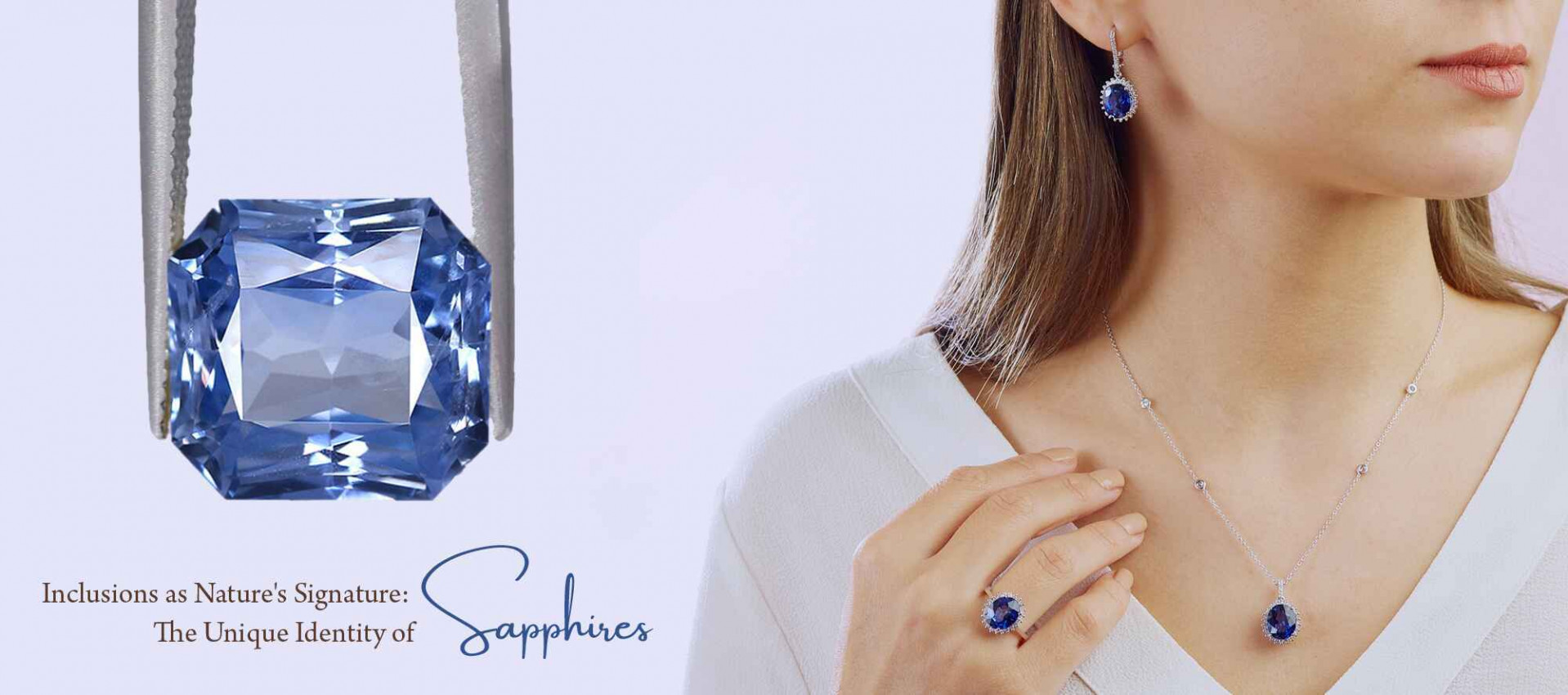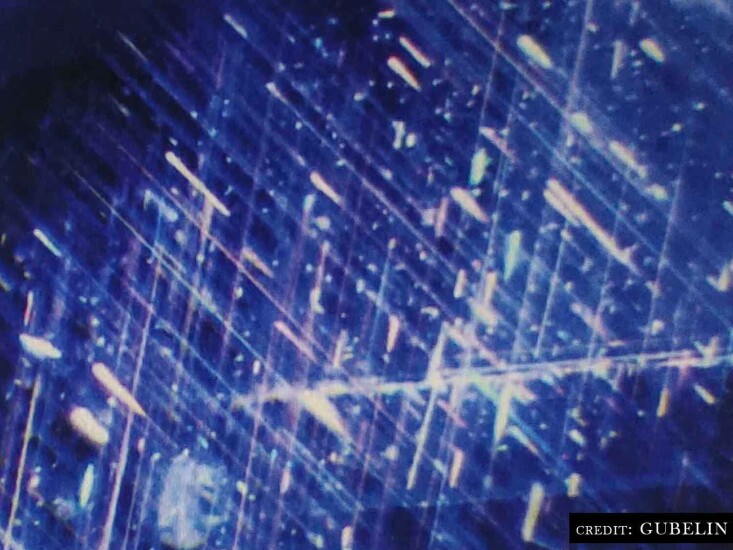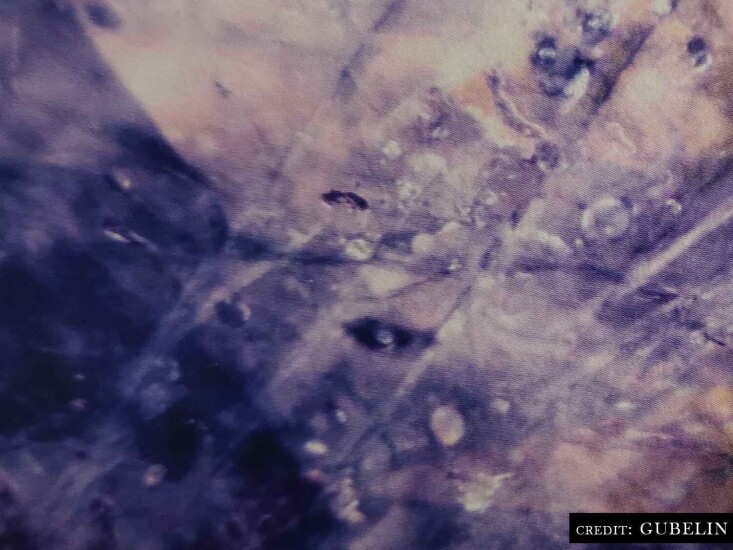 Categories
Categories 
Sapphires hold great intrigue for anyone interested in gemology. Within their stunning surface beauty lies an incredible world beneath sapphire inclusions. These intriguing structures contain minerals locked within crystal lattice structures that reveal hidden wonders and special characteristics—mesmerizing indeed!
Sapphires have long delighted the human imagination due to their mesmerizing blue hue and historical significance, but beyond this beauty lies something far greater: inclusions. These intriguing internal features give us a window into how gemstones travel from deep within Earth's crust up through time until finally being held by those who cherish and admire them. Delves deeper into this amazing realm and uncovers their incredible stories, here;
Read more :- Sapphire Grades
Inclusions are naturally occurring materials or features found within gemstones during formation that reveal information about their source, geological processes, authenticity, and overall appearance. Although inclusions may decrease value significantly, their unique characteristic makes every sapphire truly one-of-a-kind, like having the signature of Mother Earth etched onto the stone.
Rutile Needles: Rutile needles, one of the more frequently seen sapphire inclusions, consist of fine crystals of titanium dioxide that resemble delicate needles. Cut into a cabochon shape and exposed to light, these delicate crystals produce an asterism-style star pattern known as an asterism that often creates star-like formations known as an asterism pattern.

Image Credit - GUBELIN
Silk: Silk inclusions also referred to as needlelike mineral inclusions occur within sapphire gems. When polished, this phenomenon creates a stunning visual effect known as the "star effect", adding charm and allure to this gemstone gem.

Image Credit- GUBELIN
Color Zoning: Sapphires may exhibit zoned colors due to changes in chemical composition during growth. This phenomenon gives these stones their distinct hues of blue or other colors.

Image Credit - GUBELIN
Fingerprints: Some sapphires contain "fingerprints", curving lines resembling human fingertips that allow identification. This unique inclusion serves to further distinguish each gem.

Image Credit - GUBELIN
Gas Bubbles: Sapphires can capture small gas pockets during their formation, providing insight into volatile conditions deep beneath our Earth's crust.

Sapphires form over millions of years through geologic processes that span millions. Originating in igneous and metamorphic rocks under immense pressure and heat, gemologists use inclusions found within sapphires to track their journey back to their source and identify where these stones originated from.
Gemologists depend on inclusions to establish the authenticity of sapphires. Gemologists rely on inclusions as unique identifiers for synthetic or treated stones being misrepresented as natural ones, with sophisticated tools like spectroscopy and microscopy being instrumental in inspecting inclusions to accurately detect fake gems.

While sapphires with no inclusions are highly prized, their appearance does not diminish their charm rather, it offers insight into their natural history, acting as proof that 'Mother Earth of Gemstone' continues its incredible processes!
Expand your knowledge through checking:- Neelam Stone In Astrology
Sapphire inclusions also referred to as birthmarks, offer key insights into their creation and journey across the Earth's surface. These features formed during crystal growth capture moments frozen in time throughout millions of years, providing invaluable evidence about the sapphire's journey!
Explore more :- 4cs of sapphires
Sapphire inclusions offer incredible diversity, from needle-like rutile, wispy fingerprints, geometric crystals, and tiny gas bubbles to intricate needle patterns on sapphire surfaces, each telling its own special geological history story.
Gemologists use sapphire inclusions like fingerprints. By studying their internal characteristics, gemologists can use sapphire inclusions to trace back the source, determine if a gem is natural or lab-grown, assess overall quality, and assess authenticity and value. Gemologists are adept at understanding sapphire authenticity and weight through this internal feature analysis.
Learn more :- A Study on Treatments of Sapphires
Inclusions can harm a sapphire's clarity; At the same time, flawless gemstones are rare, and some specimens exhibit what is known as "eye-clean" characteristics, which are visible under magnification but remain transparent to the naked eye despite having inclusions visible under magnification, adding charm and personality. These unique qualities add character and charm to individual sapphires.
Certain inclusions are so striking and artistically placed that they're celebrated as features rather than flaws in sapphires, giving each stone its unique charm, which connoisseurs appreciate as something unexpected yet beautiful.
Keep reading :- Origins of Blue Sapphire
The discovery of sapphire inclusions unlocks an entirely new appreciation of this treasured gemstone's complexity and allure, providing insight into geological processes, gem formation, and each gem's beauty. Recognizing these wonders increases ownership satisfaction as you see how Earth's history lives within them!
Sapphires have long been treasured gemstones due to their exquisite beauty and embolic meaning, yet beneath their charming appearances lie numerous surprises—rare inclusion phenomena adding another level of intrigue and mesmerism. Explore some of these impressive and rarely witnessed features to shed light on their special stories.
Color-change sapphires exhibit an intriguing property where their colors seem to alter under different lighting conditions, from natural daylight to incandescent lighting sources, such as fluorescent or incandescent illumination. This phenomenon, known as pleochroism, can be explained by trace elements present within their crystal lattice, such as chromium or vanadium, which affect their ability to change hue.

Some sapphires feature mysterious inclusion patterns resembling fingerprints, whorls, or unique swirls reminiscent of fingerprints left behind during the crystallization process, creating what is commonly referred to as the "fingerprints of nature." Each sapphire's fingerprint is distinct and alluring to collectors and connoisseurs.
Hexagonal platelets are fascinating inclusions found within certain sapphires, creating intricate geometric patterns when illuminated. Thought to be mica or graphite crystal structures, hexagonal platelets reflect light, creating breathtaking reflections and refractions that delight viewers of every kind.
Negative Crystals (also referred to as ghost Crystals) are indulged inclusion phenomena found within some sapphires. As part of its growth process, during which mineral crystals once existed within the sapphire, an opening forms whereby liquid or gas fills it and leaves behind its imprint within the sapphire as a visible imprint of their shape within it.
Explore further :- Blue Sapphire Stone
Sapphire inclusion phenomena reveal an exquisite world, offering us a glimpse of their journey from deep within the earth into gemstone form. Rare and exotic inclusions enliven each gemstone's individuality while telling a unique narrative story within them. We should honor and cherish these gifts from nature as we marvel at these precious and stunning gemstones that hold within them natural wonders not easily seen elsewhere on our planet!




Anniversary Gifts By Year - Gemstones For 1st To 25th Anniversary
April 15th, 2025